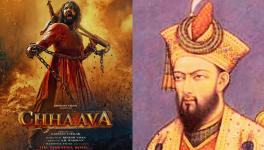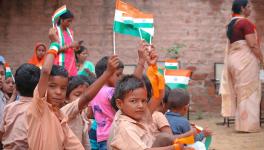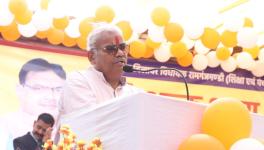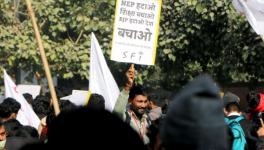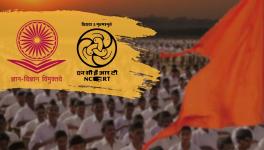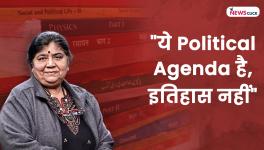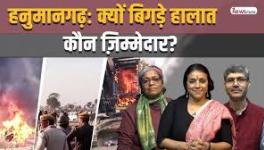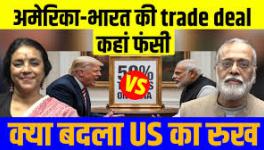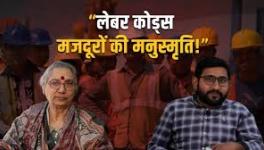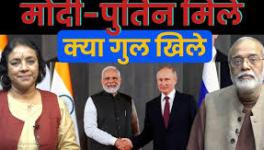NCERT: History as Tool for Promoting Divisive Hate

Representational Image. Image Courtesy: Flickr
The National Centre for Education, Research and Training (NCERT) is the body that is taking the final decision about the content of school textbooks. In the past couple of decades, it has become more a vehicle of promoting a communal view of history rather than presenting the objective and rational view to young minds. As history is an important part of shaping the understanding of young minds, the communal tilt in the school curriculum will surely worsen the prevailing hate against a community that has been ‘othered’ (Muslims) through multiple factors.
What the British colonial rulers introduced was a history that presented the kings through the prism of religion. Kings who rule for power and wealth were presented as driven by the agenda of promoting their religion. This ignored the fact that there were enough battles between kings of the same religion. Their armies many times were mixed ones with people from both religions a part of it. They also did many actions, rather most actions that will not be approved by the norms prevailing in present times.
To pursue their goals of expansion of their kingdoms, wars were frequent amongst the neighbouring kings. War is the most inhuman act, and the type of brutalities in these wars or other acts of the kings were not restricted to kings belonging to one religion alone.
While Shivaji’s initial battle was against Chandra Rao More, Babar had to defeat Ibrahim Lodi to establish his rule and the foundation of his dynasty here in India. There was a battle between the great Chola kings and the Chalukya King.
Kings cannot be seen in isolation from the context of their times. At present, the atrocities by Mughal kings are being shown in isolation, to paint them in a dark shade. One more point that needs to be understood is that while kings had mixed administrations, through complex mechanisms, the Muslim Kings are being identified with today’s Muslims and so are Hindu kings being identified with today’s Hindus. Every new demonisation of Muslim kings pushes today's Muslim further into corners, increasing their intimidation.
All this came to one’s mind yet again as a new social science text for 8th Class by NCERT has been released. This gives a revised take on Indian history from the 13th to 17th Centuries. This textbook is part of the series, Exploring Society: India and Beyond. It is the first of the one which NCERT will be releasing to introduce students to the Delhi Sultanate and Mughal period.
This time round, NCERT has gone full blast in demonising the Muslim kings. As per this book, temple destructions were also for iconoclasm.
An in-depth understanding of temple destructions tell us a different tale. One knows that poet Kalhans Rajtaringini tells us about Raja Harshdev who had appointed a special officer, Deottpatan Nayak (officer responsible for uprooting the idols of gods). He was doing this for wealth and he might be the king who destroyed the maximum number of temples.
At present, the figure of the number of temples destroyed by Aurangzeb is being exaggerated without any concrete source. It is true that Aurangzeb gave orders for destroying some temples but surely his donations to Hindu temples are much more than the ones he destroyed. Farman’s of King Aurangzeb by Dr. Vishambharnath Pandey gives the list of innumerable temples that were given grants by the king.
The issue of Babar destroying the Ram temple was the major divisive issue. The Allahabad High Court gave a judgement for Hindus’ share in the mosque case based on people’s faith, not on legal grounds. The Supreme Court verdict also did not confirm the presence of a temple underneath the mosque. As such, in Babar’s will kept in the National Museum in Delhi, he instructs Humayun to ensure that temples are not destroyed and cows are not slaughtered as majority of people here are Hindus and their sentiments should be respected. This was part of the statecraft.
The NCERT book refers to Babar’s order to massacre 30,000 people at Chittorgarh and destroy temples. Incidentally, when the siege of Chittor was laid, Rajput King Bhagwant Das was an ally of Akbar in the siege. It is not a question of whataboutery, but surely many Hindu kings have done similar things.
In the battle between Cholas and Chalukyas, the winning Cholas destroyed the whole city and destroyed many Jain Temples. Pushyamitra Shung began the killings of Buddha Bhikkus and destruction of Buddha viharas and stupas. Shivkalyan Raja, written by Bal Samant tells us about the plunder, burning and injuring of people in Surat by Shivaji’s army. All this was nothing unusual in the era of kingdoms.
Cruelty was the hallmark of battles and is not related to the religion of a king. The biggest fact being undermined and suppressed at present is that the armies of Mughal kings had Hindu-Rajput soldiers while the armies of Hindu kings had Muslim soldiers. Akbar had Man Singh, Aurangzeb had Jaising and Jaswant Singh among others. Rana Pratap had Hakim Khan Sur as his general and Shivaji Maharaj had Daulat Khan, Ibrahim Gardi and many Siddhis on his side.
The presentation in this textbook of history is very selective, hiding the side where Muslims were with Hindu kings or Hindus were with Muslim kings. While the cruelty of Babar, Akbar and Aurangzeb has been highlighted, there is no mention at all of the mixed character of their administration and armies.
Similarly, Jazia was not imposed all through the Mughal administration. Akbar came to power in 1560, and withdrew it within two-three years. Jazia was no incentive for conversion. It was a tax on non-Muslims, who are regarded as dhimmis, i.e. those protected by the Muslim state. And this tax was exempted for Brahmins and women. It was no incentive for conversion, as Muslims had to pay Zakat.
This period is being called ‘a dark period’ of our history. In every period of history, there are some bright spots and some shameful practices. During this period, we saw the emergence of the most humane Bhakti and Sufi traditions. It was during this period that Sikh religion developed and flourished. It was during this period of history that social and cultural interaction between the two major religious traditions gave rise to the coming up of a mixed culture -- the Ganga-Jamuni tehzeeb. It was during this period that many practices of two religions synthesised into the traditions of our land.
The writer is a human rights defender and a former professor at the Indian Institute of Technology, Bombay. The views are personal.
Get the latest reports & analysis with people's perspective on Protests, movements & deep analytical videos, discussions of the current affairs in your Telegram app. Subscribe to NewsClick's Telegram channel & get Real-Time updates on stories, as they get published on our website.












